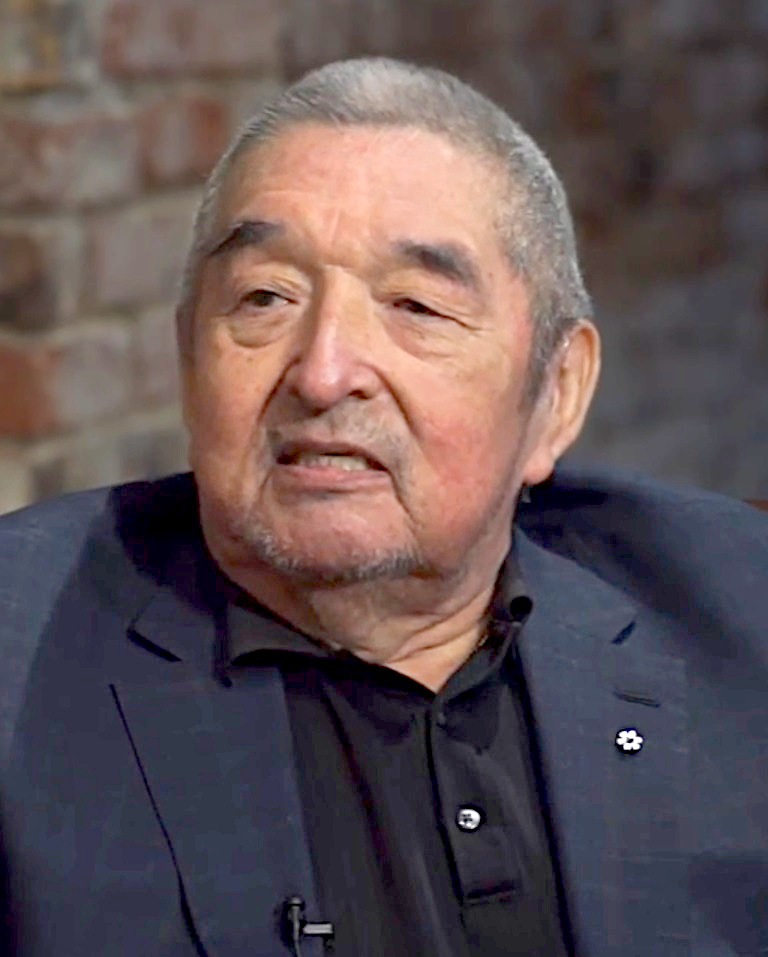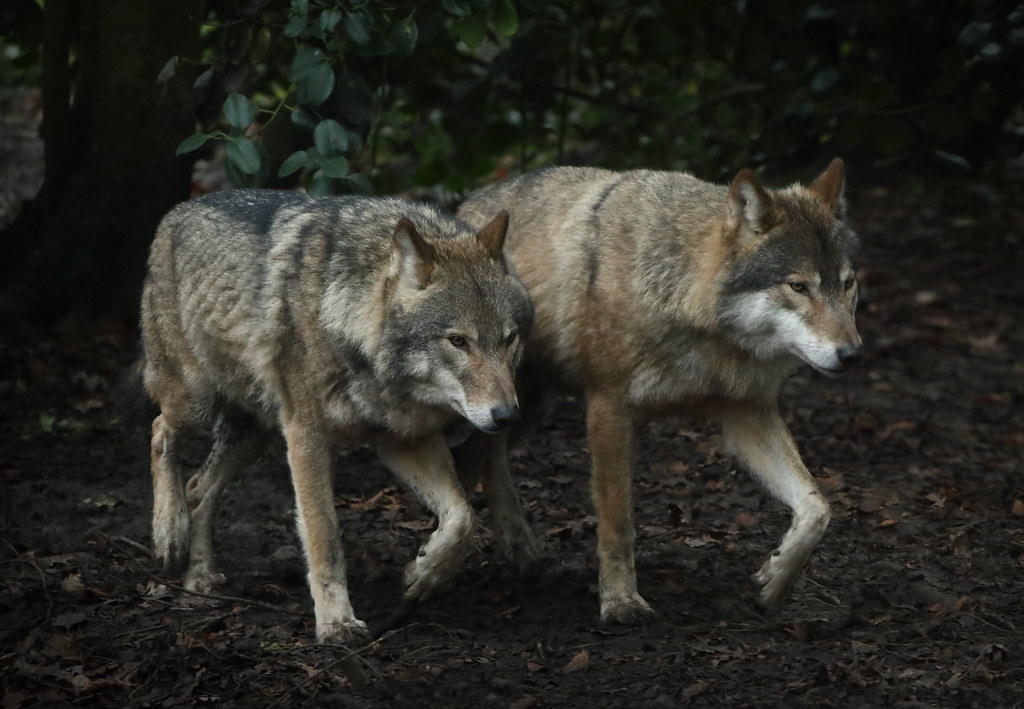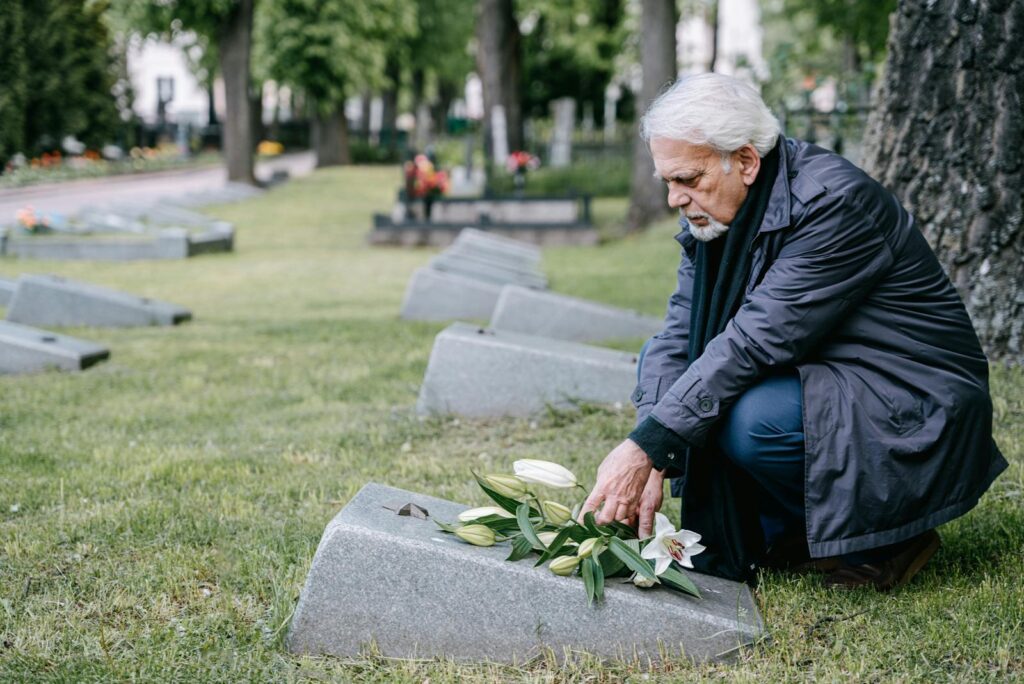
The entertainment world recently paused to mourn the passing of Graham Greene, a towering figure in film and television whose career spanned nearly a half-century and left an indelible mark on Hollywood. Dying at 73 in Stratford, Ontario, after a long battle with an unspecified illness, Greene was more than just an actor; he was a trailblazer, a barrier-breaker, and a profoundly talented individual whose work resonated with audiences across the globe.
Born in June 1952 in Ohsweken, Ontario, on Canada’s Six Nations Reserve, Greene’s journey to the silver screen was as unique as his performances. Before embracing acting in the 1970s, he pursued various trades, from drafting to high steelwork, welding, and carpentry. This diverse background undoubtedly contributed to the grounded authenticity and depth he brought to every character, making him one of Hollywood’s most visible and respected Indigenous actors.
His passing, first reported by Variety, has prompted an outpouring of tributes from colleagues and fans alike, underscoring the immense impact he had on the industry and those who worked alongside him. Greene’s legacy is one of singular talent, demonstrating with every role that Indigenous stories not only should, but must, be told by Indigenous voices, transforming the landscape of representation in entertainment.

1. **Oscar-Nominated Role in ‘Dances With Wolves’**Graham Greene’s name became synonymous with the critically acclaimed 1990 film “Dances With Wolves,” a monumental Western epic that redefined the portrayal of Native Americans in mainstream cinema. It was his landmark role as Kicking Bird, the wise and compassionate Lakota medicine man, that earned him an Academy Award nomination for Best Supporting Actor in 1991. This recognition was not just a personal triumph for Greene but a significant moment for Indigenous representation in Hollywood, marking him as only the second North American Indigenous person to receive such an honor, following Chief Dan George.
“Dances With Wolves,” directed by and starring Kevin Costner, was a massive blockbuster and a critical darling, garnering 12 Oscar nominations and winning seven, including the coveted Best Picture and Best Director awards. Greene’s portrayal of Kicking Bird was central to the film’s success and its groundbreaking narrative, which offered a more nuanced and respectful depiction of a Lakota Sioux community, a stark contrast to the historical caricatures often seen in Westerns.
The role presented unique challenges that Greene met with his characteristic dedication and understated humor. He famously had to learn the Lakota language, a daunting feat he described as taking “three months to learn the language. I was working at it eight hours a day.” Additionally, he mastered riding horses bareback at a gallop while shooting arrows, to which he quipped when asked about prior experience, “Only on buses.” His commitment brought an unparalleled authenticity to Kicking Bird, making the character resonate deeply with audiences.
Despite the immense recognition and the buzz surrounding his Oscar nomination, Greene remained remarkably grounded. In a 1991 interview with The Toronto Star, he humbly stated, “Everybody else is more excited than I am. It’s nothing special. It’s like somebody saying after opening night that you were good. You’ve still got to get up the next morning and go back to work — and be better.” This perspective exemplified his dedication to his craft over accolades, though the nomination undeniably launched his career to new heights, leading to performances in more than 200 film and television productions.
The film, while breaking barriers, also generated debate regarding its “white-savior” overtones. Greene, however, deftly sidestepped the political fray, stating in a 1991 interview with The Los Angeles Times, “Everybody’s getting political on me. I tell them to take those questions to the politicians.” He characterized himself as “sort of a passive activist,” emphasizing his focus on the craft rather than engaging in the controversies surrounding the film’s broader cultural narrative.

2. **Early Life and Path to Acting**Graham Greene’s journey to becoming an Oscar-nominated actor was far from conventional, reflecting a life rich with varied experiences before he found his true calling on stage and screen. Born on June 22, 1952, in Ohsweken, a community on Canada’s Six Nations Reserve in southwestern Ontario, his roots were deeply embedded in Indigenous culture and community. His parents were John Greene, a paramedic and maintenance worker, and Lillian Greene, who provided a foundational upbringing.
Before the bright lights of Hollywood beckoned, Greene explored a series of manual labor professions, which he often recounted with a pragmatic sensibility. He worked as a draftsman, a high steelworker, a welder, and a carpenter, describing these early years in Hamilton, Ontario, as doing “anything to stay afloat.” He even served as a carpet layer, a roadie, and an audio technician, each role undoubtedly contributing to a broad understanding of life that later infused his character portrayals with authenticity and relatability.
Greene’s entry into acting in the 1970s was, by his own account, somewhat serendipitous. He recalled to The Toronto Star in 1989 that a friend, looking for Native actors to workshop a script, kept pestering him to participate. Initially, Greene had no interest. “Finally, I said, ‘Look, we’ll cut the cards. If I win, you don’t bother me any more. If you win, I’ll do the workshop.’ I pulled the two of clubs,” he humorously recounted, indicating fate’s hand in his career pivot.
This fateful turn led him to gain experience with the Centre for Indigenous Theatre in Toronto, a crucial step in formalizing his talent. He quickly transitioned into performing in professional stage productions, gracing stages in both Canada and Britain. His theatrical prowess was recognized early on, earning him a Dora Mavor Moore Award in 1989 for his outstanding male performance in the tragicomedy “Dry Lips Oughta Move to Kapuskasing” by the renowned First Nations playwright Tomson Highway. This solid foundation in theater honed his skills and prepared him for the extensive film and television career that lay ahead.
Read more about: Floyd Levine: A Prolific Career Remembered — Tracing the Enduring Legacy of the Veteran Actor, From ‘Baywatch’ to ‘The Hangover,’ After His Passing at 93

3. **Breaking Barriers for Indigenous Actors**Graham Greene stands as a pivotal figure in the history of Indigenous representation in entertainment, having unequivocally broken barriers for Native actors throughout his long and successful career. Through his singular talent and unwavering commitment, he demonstrated that Indigenous stories and characters should, and indeed must, be told and embodied by Indigenous people themselves. His presence on screen challenged entrenched stereotypes and opened doors for future generations.
In an industry that historically relegated Native Americans to supporting, often two-dimensional roles, or worse, caricatures of “bloodthirsty killers” standing in the way of westward expansion, Greene’s nuanced and dignified portrayals were revolutionary. He brought complexity, humanity, and depth to every character, dismantling preconceived notions and offering audiences a richer, more accurate vision of Indigenous life and experience. His work was a powerful counter-narrative to decades of misrepresentation.
Lily Gladstone, star of “Killers of the Flower Moon,” eloquently captured Greene’s impact on Instagram, stating, “Graham Greene was one of the best to ever do it. He lived on the screen in an absolutely unparalleled way. He made everything he was in better. Funnier. Deeper. Memorable.” She further articulated the profound significance of his contributions: “It’s hard to find any suitable words to express what his work meant, but his impact is unparalleled and expansive. I wish I could have met him. I probably would have thanked him.”
D’Pharaoh Woon-A-Tai, who played Bear Smallhill on the acclaimed FX comedy-drama “Reservation Dogs” — a show itself praised for smashing caricatures and stereotypes of Native Americans — also paid tribute to Greene’s trailblazing influence. Woon-A-Tai posted on Instagram, “You showed us it can be done and how to leave your mark. Trail blazing for every young native actor just dreaming.” His words highlight Greene’s role as a mentor and an inspiration, demonstrating a tangible path forward for aspiring Indigenous talent in the industry.
Greene’s ability to transcend limited roles, while never shying away from his heritage, laid the groundwork for a new era of authenticity. His enduring presence and the critical acclaim he received proved that audiences were eager for genuine Indigenous voices and narratives. This legacy of empowerment and accurate representation is one of the most significant contributions of his illustrious career.

4. **His Stance Against Ethnic Pigeonholing**While Graham Greene became one of Hollywood’s most visible Indigenous actors, he consistently pushed back against being pigeonholed solely by his ethnicity. His career was a testament to his versatility, demonstrating a desire to inhabit a wide array of characters regardless of their background, a stance that was both professional and deeply personal. He believed in the craft of acting as a transformative art, not a label.
In a 2018 interview with Reader’s Digest Canada, Greene expressed his dislike for restrictive categorizations: “I’m a fan of diverse casting. I hate that phrase, ‘Graham Greene, Native actor.’ You don’t hear people say, ‘Denzel Washington, Black actor,’ or ‘Kevin Costner, white actor.’” This statement clearly articulated his wish to be recognized first and foremost as an actor, a professional whose talent transcended ethnic boundaries.
His agents were often instructed to pursue diverse projects after his breakthrough in “Dances With Wolves” to ensure he wasn’t stuck playing a single type of role. Greene articulated this commitment to variety in 2021, stating, “I tend to move along in my career and take roles that are unique and different. I’ve played God twice. I’ve played judges, lawyers, doctors, police officers, and detectives. The diversity of roles is what I like to play. I don’t like to be pigeonholed as one thing because you get stuck in one role.” This philosophical approach allowed him to explore the full spectrum of human experience through his performances.
One memorable anecdote illustrating this principled stance involved an audition for the 1995 submarine thriller “Crimson Tide.” Greene recalled to Canada’s Theatre Museum reading for director Tony Scott, who then expressed, “I can’t really see a Native American working on a submarine.” Greene’s swift and poignant reply underscored his heritage and military service within his community: “If you could, I would let you tell my four dead uncles who died in the Pacific on subs. Thanks for the trip to New York. I’m going to Sardi’s for lunch now.” This powerful retort not only highlighted the absurdity of Scott’s comment but also showcased Greene’s quiet defiance and pride.
Furthermore, despite being born and raised in Canada, Greene did not consider himself solely a Canadian actor. As a product of the Six Nations, an Iroquois-speaking confederacy, he simply called himself North American. “We don’t recognize the 49th parallel as a border,” he explained in a 1990 television interview. This perspective further cemented his identity as an artist who saw beyond man-made divisions, truly embodying the spirit of a global performer while remaining deeply connected to his Indigenous roots.

5. **Winning a Grammy for ‘Listen to the Storyteller’**Graham Greene’s talents extended far beyond the visual medium of film and television, reaching into the realm of spoken word. In 2000, he achieved a remarkable milestone by winning a Grammy Award for Best Spoken Word Album for Children for his work on “Listen to the Storyteller.” This unexpected accolade showcased his captivating narrative voice and his ability to engage and enchant listeners of all ages, adding another unique dimension to his diverse career.
The Grammy win highlighted Greene’s versatility and his profound connection to storytelling, a tradition deeply embedded in many Indigenous cultures. His ability to convey emotion, wisdom, and wonder through his voice alone demonstrated a different facet of his performance artistry. It illustrated that his power as a performer was not solely dependent on his physical presence on screen but also on the evocative quality of his vocal delivery.
“Listen to the Storyteller” provided an avenue for Greene to share narratives in a format that allowed for intimate connection with the audience, particularly young listeners. This award was a significant honor, placing him among a select group of artists recognized for their contributions to children’s literature and audio entertainment. It underscored his broad appeal and the universal nature of his storytelling prowess.
This Grammy Award, alongside his Oscar nomination, solidified Greene’s status as an artist of exceptional range and accomplishment. It demonstrated his commitment to various forms of artistic expression and his capacity to excel in each. The recognition for “Listen to the Storyteller” further enriched his legacy, proving that his impact resonated across multiple creative disciplines and with diverse audiences, well beyond the dramatic roles for which he was primarily known.

6. **A Prolific Television Career Spanning Decades**Graham Greene’s remarkable versatility was perhaps nowhere more evident than in his extensive and impactful television career, which spanned nearly half a century. From his early Canadian drama series to acclaimed American productions, Greene became a familiar and revered presence on the small screen, consistently delivering performances that enriched the narratives and captivated audiences. His ability to adapt to diverse genres, from period dramas to contemporary comedies and gritty Westerns, underscored his profound talent and made him a staple in the evolving landscape of television.
His journey on television began with his debut in the 1979 Canadian drama series “The Great Detective,” laying the groundwork for a career that would see him become one of the most recognizable Indigenous actors globally. A notable recurring role in the early 1990s came with “Northern Exposure,” where he portrayed private detective Leonard Quinhagak. This character allowed Greene to showcase his distinctive blend of laconic wit and grounded wisdom, endearing him to a broad viewership and demonstrating his capacity to inhabit complex figures within an ensemble cast. His appearances in popular shows like “Murder She Wrote” further cemented his presence in mainstream television, proving his appeal across various demographics.
In later years, Greene continued to grace television screens with his unmistakable presence, taking on significant roles in critically acclaimed series that further diversified his portfolio. He appeared in the Western miniseries “1883,” a prequel to “Yellowstone,” and the Sylvester Stallone-led crime drama “Tulsa King,” both from the prolific creator Taylor Sheridan. These roles provided Greene with platforms to engage with contemporary storytelling, often bringing his characteristic gravitas and authenticity to characters that resonated deeply.
His work on the FX comedy-drama “Reservation Dogs” was particularly significant, as the show itself was lauded for smashing caricatures and stereotypes of Native Americans. Greene’s involvement in such a groundbreaking series reinforced his commitment to authentic representation and demonstrated his continued relevance in projects that actively shape and improve Indigenous narratives in entertainment. He also made impactful guest appearances in major productions like “The Last of Us” and “Echo,” proving his enduring ability to elevate any scene with his unique presence and understated power.
Read more about: Ruth Buzzi: An In-Depth Tribute to the Enduring Star Who Defined ‘Laugh-In’ and Enchanted Generations with Her Unforgettable Wit
7. **A Diverse Portfolio of Memorable Film Roles**Beyond his iconic performances in “Dances With Wolves” and “The Green Mile,” Graham Greene cultivated an impressively diverse filmography, showcasing his ability to master various genres and character types. His choices reflected a deliberate effort to avoid typecasting, as he actively sought out roles that challenged him and allowed him to explore the full breadth of his acting prowess. These varied appearances solidified his reputation as a character actor of exceptional depth and range, beloved by audiences and respected by his peers.
In 1994, Greene brought his distinctive wry humor to the Western comedy “Maverick,” starring alongside Mel Gibson and Jodie Foster. He played Joseph, whom critic Caryn James described as “a smooth-operating Indian who masquerades as a me-want-wampum type of guy.” His comedic timing and nuanced portrayal added significant charm and depth to the film, further proving his versatility beyond serious dramatic roles. The very next year, he delved into action, appearing as a New York City police detective in “Die Hard with a Vengeance,” the third installment of the high-octane franchise starring Bruce Willis. This role showcased his capacity for modern, urban narratives, far removed from the historical settings he was often associated with.
Greene also lent his gravitas to a different kind of cultural phenomenon with his roles in “The Twilight Saga.” He portrayed tribal elder Harry Clearwater in the 2009 installment, “New Moon,” and continued his role in “Breaking Dawn – Part 2” in 2012, playing the chief of a Native American tribe. These films, wildly popular with a younger demographic, allowed Greene to connect with new audiences and contributed to his widespread recognition across generations. His presence added a layer of grounded wisdom to the fantastical storyline, making his characters memorable within the series.
His commitment to independent cinema was also notable, evidenced by his nomination for an Independent Spirit Award for his work in the 2002 film “Skins.” This influential indie film documented life on the Lakota Sioux reservation, allowing Greene to contribute to narratives that directly engaged with Indigenous experiences and concerns. Later, in 2017, he delivered compelling performances in both Taylor Sheridan’s acclaimed neo-western thriller “Wind River” and Aaron Sorkin’s high-stakes drama “Molly’s Game,” continuing to collaborate with top-tier talent and reinforce his standing as an in-demand actor across Hollywood. Even in his final years, Greene remained active, appearing in “Trail of Vengeance,” released this year, and with another thriller, “Ice Fall,” yet to be released, a testament to his enduring dedication to his craft.
Read more about: Lou Cutell Remembered: A Deep Dive into the Illustrious Career of a Beloved Character Actor, from Seinfeld’s ‘Assman’ to Broadway Stages

8. **A Voice of Wisdom in ‘Red Dead Redemption 2’**In a testament to his expansive reach and willingness to embrace new forms of storytelling, Graham Greene lent his distinctive voice and formidable talent to the massively popular 2018 video game “Red Dead Redemption 2.” His role as elder Chief Rains Fall became an instant fan favorite, further cementing his appeal across diverse media and demonstrating his profound impact even in digital interactive narratives. This venture into the world of video games underscored his status as a cultural icon, capable of connecting with audiences in unexpected and powerful ways.
Chief Rains Fall, the leader of the Wapiti Native American tribe, is a character imbued with deep wisdom, stoicism, and a tragic understanding of the encroaching world. Greene’s voice acting brought an unparalleled authenticity and emotional resonance to the character, making Rains Fall one of the most memorable figures in the game’s richly detailed narrative. His delivery conveyed the chief’s struggles to maintain peace and preserve his people’s way of life against overwhelming odds, embodying the dignity and resilience that Greene so often brought to his Indigenous roles.
The inclusion of a prominent Indigenous character voiced by an actor of Greene’s caliber was significant for the gaming industry, adding layers of cultural depth and historical authenticity to “Red Dead Redemption 2.” His performance helped to portray a Native American perspective with respect and nuance, a crucial contribution in a medium that, like film and television, has historically struggled with accurate representation. Fans universally praised Greene’s portrayal, recognizing the emotional weight and profound integrity he instilled in Chief Rains Fall.
This role exemplified Greene’s enduring influence, proving that his artistry transcended traditional mediums. It allowed a new generation of fans, particularly those deeply invested in immersive storytelling, to experience his powerful presence and connect with his ability to craft compelling characters. His performance in “Red Dead Redemption 2” stands as a unique and beloved chapter in his storied career, showcasing his remarkable capacity to adapt, innovate, and leave an indelible mark wherever his talent took him.

9. **A Rich Tapestry of Accolades and Enduring Honors**While Graham Greene remained grounded throughout his career, often downplaying the fanfare, his extraordinary contributions to the arts were widely recognized and celebrated through a multitude of prestigious awards and honors. These accolades not only affirmed his exceptional talent but also underscored his significant impact on both the Canadian and international entertainment landscapes. His impressive collection of distinctions painted a clear picture of a truly revered artist whose work resonated deeply with critics, peers, and institutions alike.
Beyond his historic Oscar nomination for “Dances With Wolves” and his surprising Grammy win for “Listen to the Storyteller,” Greene was a recipient of several Gemini Awards, Canada’s premier television awards, acknowledging his excellence on the small screen. He also earned a Canadian Screen Award, further cementing his status as a leading figure in Canadian performing arts. These national honors highlighted his consistent quality and the respect he commanded within his home country’s vibrant creative industry, long before his global breakout.
His enduring legacy was honored with the Earle Grey Lifetime Achievement Award, a testament to his long and distinguished career and his profound influence on countless actors and filmmakers. In a remarkable recognition of his broader societal contributions, Sir Wilfred Laurier University in Waterloo, Ontario, bestowed upon him an honorary Doctor of Law degree in June 2008. This academic acknowledgment from a university near his ancestral Oneida Reserve further illustrated the respect he garnered not just as an actor, but as an influential figure within Indigenous communities and beyond.
The Canadian government also paid tribute to Greene’s invaluable impact, naming him a recipient of both the Order of Canada and the Governor General’s Award. These are among the highest civilian honors in Canada, recognizing individuals who have made extraordinary contributions to the nation. His artistry and advocacy were further immortalized in 2021 when he received a star on Canada’s Walk of Fame, placing him among the country’s most iconic figures. These honors collectively serve as a powerful testament to a career defined by artistic integrity, groundbreaking representation, and an unwavering commitment to his craft.
Read more about: Sir Michael Gambon, the Distinguished Actor Who Enchanted Audiences as Dumbledore, Dies at 82: A Legacy of Stage and Screen Mastery

10. **An Outpouring of Love: Tributes from Colleagues and Admirers**The news of Graham Greene’s passing prompted an immediate and widespread outpouring of tributes from across the entertainment industry, reflecting the deep affection and profound respect he commanded among his peers. Colleagues, collaborators, and admirers alike shared heartfelt messages, painting a picture of an artist who was not only immensely talented but also a warm, witty, and inspiring presence in their lives. These eulogies underscored the human connection he forged, transcending his on-screen roles.
Lou Diamond Phillips, who worked with Greene on projects like “Wolf Lake” and “Longmire,” shared a deeply personal tribute on social media, expressing his profound sadness. “Heartbroken. Terribly saddened to hear of the passing of Graham Greene at only 73,” Phillips wrote. He remembered Greene as “An Actor’s Actor. One of the wittiest, wiliest, warmest people I’ve ever known. Iconic and Legendary. RIP, My Brother.” This intimate reflection speaks volumes about Greene’s character off-screen, highlighting his warmth and geniality among his colleagues.
His agent, Michael Greene (no relation), also released a poignant statement, emphasizing not only his client’s professional excellence but also his moral compass. “He was a great man of morals, ethics and character and will be eternally missed,” Michael Greene said, adding a personal farewell: “You are finally free. Susan Smith is meeting you at the gates of heaven,” referring to the actor’s longtime agent who passed in 2013. These words capture the deep bond Greene had with his representation, showing a relationship built on mutual respect and affection extending beyond mere business.
The sentiment echoed throughout the industry, confirming Greene’s reputation as a cherished figure. His ability to leave such a lasting impression on those he worked with, whether through his mentorship or simply his presence, speaks to the unique individual he was. The collective grief and shared admiration articulated by his colleagues serve as a powerful testament to the man behind the legendary performances, solidifying his place as not just a gifted actor, but a beloved member of the entertainment community.
Read more about: Pat Carroll: A Storied Life, The Unforgettable Voice of Ursula, and a Legacy of Laughter

11. **The Enduring Legacy of a Quiet Trailblazer**As the entertainment world reflects on the remarkable life and career of Graham Greene, it becomes unequivocally clear that his legacy extends far beyond a collection of memorable performances; it is one of quiet trailblazing, profound cultural impact, and unwavering dedication to authenticity. He didn’t just play characters; he infused them with a humanity that resonated globally, forever altering the landscape of Indigenous representation in film and television and inspiring countless aspiring artists.
Greene’s most significant contribution lies in his role as a pioneer for Native actors. In an industry historically marred by caricatures and stereotypes, he stood as a beacon of dignity and truth. He proved that Indigenous stories are not only compelling but essential, and that they must be told and embodied by Indigenous voices. His work opened doors, shattered glass ceilings, and created a visible pathway for future generations, transforming how Native Americans are seen and portrayed on screen.
His commitment to his craft, his refusal to be pigeonholed, and his pursuit of diverse roles across every conceivable genre—from Oscar-nominated dramas to beloved video games—demonstrated a rare versatility. Greene showed that talent knows no boundaries of ethnicity or medium, and that true artistry lies in the ability to connect with the human experience, regardless of the role. He elevated every project he touched, leaving an indelible mark on cinematic and television history.
Moreover, Greene’s personal character, his grounded humility, and his quiet activism left a powerful impression. He carried his heritage with pride, his work with integrity, and his interactions with genuine warmth. He was a mentor, an inspiration, and a testament to the power of perseverance and authenticity. His life’s work built bridges of understanding, fostering a deeper appreciation for Indigenous cultures and experiences among diverse audiences worldwide.
Graham Greene’s passing leaves an irreplaceable void, but his spirit and his profound impact will continue to resonate for generations. His performances will endure, his advocacy will echo in the ongoing fight for representation, and his example will light the way for those who follow. He was more than an actor; he was a cultural force, a storyteller, and a true icon whose legacy will forever shine brightly in the firmament of entertainment.
Read more about: Gene Espy, Appalachian Trail Pioneer, Dies at 98: Exploring a Life of Adventure, Faith, and Enduring Legacy on the Trail
As we bid farewell to Graham Greene, we do so with immense gratitude for the profound gifts he shared with the world. His artistry was a testament to the power of storytelling, his presence a beacon of authenticity, and his legacy an enduring source of inspiration. He has left an indelible mark, not just on the screens we watch, but on the hearts and minds of all who had the privilege of witnessing his extraordinary talent. He truly was one of a kind, and he will be dearly missed, but never forgotten.




